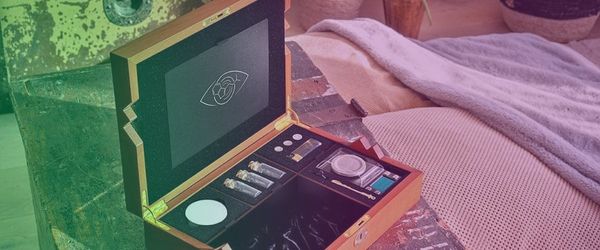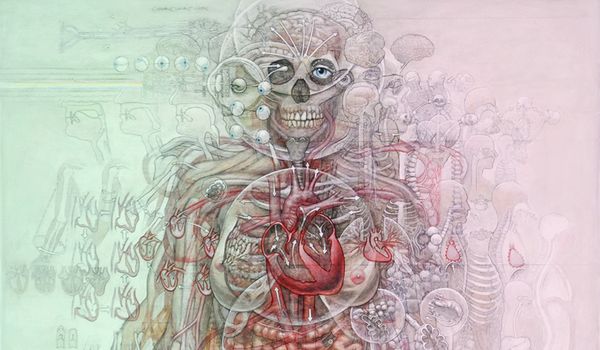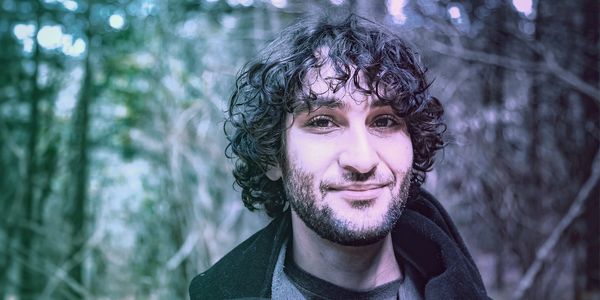Jordan Lejuwaan • • 11 min read
The Wim Hof Method *Revealed* – How to Consciously Control Your Immune System

This is post 2 of 3 in the series “Wim Hof”
Wim The Iceman Hof
- Embracing The Cold: A Workshop With Wim ‘The Iceman’ Hof
- The Wim Hof Method *Revealed* – How to Consciously Control Your Immune System
- The Science of How to Consciously Control Your Immune System
Note to the aspiring Wim Hof Method practitioner: In this post, we will provide all of the free resources and tools you need to learn the Wim Hof breathing technique today. Think of this as the ultimate resource page for mastering Wim’s breathing technique.
Here’s the table of contents for quick navigation:
- Introduction to Wim Hof
- Why Learn The Wim Hof Method?
- The Science of the Wim Hof Breathing Technique
- How to Practice The Wim Hof Power Breathing
- Cold Exposure Training
Introduction to Wim Hof
“If you can learn how to use your mind, anything is possible.”
― Wim Hof, Becoming the Iceman
The creator of the Wim Hof Method is known by many as a human outlier, capable of things we mere mortals can only dream of.
He is the world record holder of ice endurance by standing in a container full of ice for 1 hour 52 minutes and 42 seconds. He ran a full marathon above the polar circle at a temperature of −20 °C (−4 °F) on his bare feet.
He climbed Mount Kilimanjaro and attempted Mount Everest just wearing shorts. And not only can his body withstand cold, he is also capable of doing amazing feats in the heat.
Last year he ran a full marathon (42.195 kilometres (26.219 mi)) on the highest desert plains in the world, the Namib Desert, without any water nor any food.

“The run itself was very difficult and after around 10 miles my footwear had caused me bloody blisters which slowed down the pace dramatically… I carried on and suffered more because I didn’t drink any water during the marathon.”
Wim Hof
Wim is able to accomplish these feats with ease through the use of ‘The Wim Hof Method’—a breathing technique that allows you to control the autonomous systems of the body.

However, the most earthshaking effect of the Wim Hof Breathing Method is the ability to consciously control the immune system to fight off diseases. Our immune system plays a significant role in almost all devastating diseases plaguing the modern world and finding a way to improve it can help us discover new avenues for medicine.
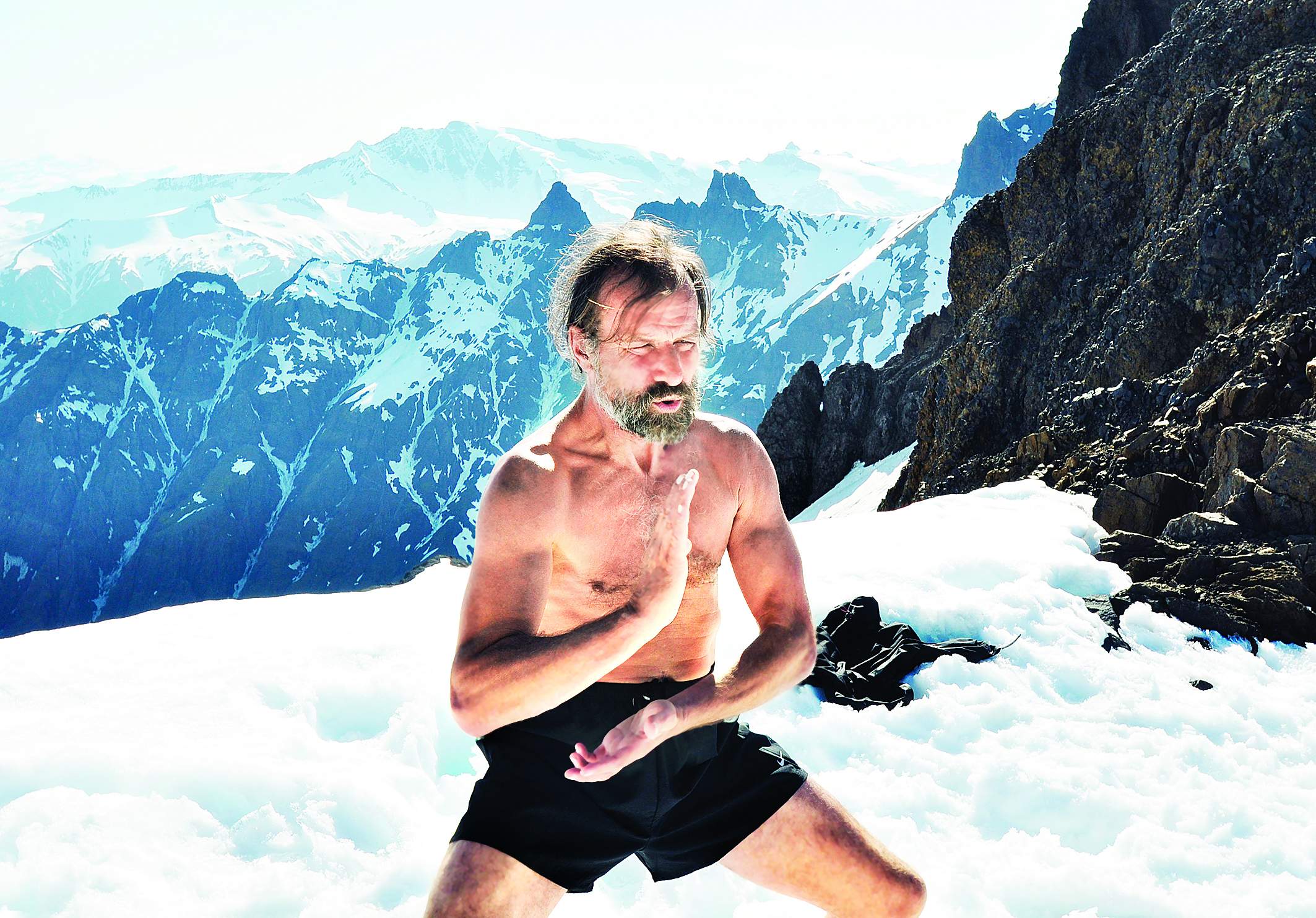
Why Learn The Wim Hof Method?
On March 23rd, 2013, twenty-four scientific study participants were injected with a dead strain of Escherichia coli, a bacteria that normally induces violent sickness for days on end.
In this study, now published in the prominent scientific journal Proceedings of the National Academy for Sciences, they studied his method, a combined practice consisting of third-eye meditation, cyclic hyperventilation followed by breath retention and cold exposure.
With the use of the Wim Hof Method, the participants felt nothing (Wim previously did this and felt no more than a slight headache).
The other twelve, the untrained control group, were left to shiver and suffer.
The research conclusions were baffling. It suggests that everyone, with sufficient training, can modulate their immune response.
Hitherto, both the autonomic nervous system and innate immune system were regarded as systems that cannot be voluntarily influenced. The present study demonstrates that, through practicing techniques learned in a short-term training program, the sympathetic nervous system and immune system can indeed be voluntarily influenced.
Proceedings of the National Academy for Sciences
In this ground-breaking study, he has shown he is, in fact, not an anomalous outlier, but a very well-trained man. His technique can be taught to everyone. (this is what Wim claims, the researchers are themselves clearly indicate that we can’t predict the same results with people with diseases. However, first-person reports of people with diseases state that it, indeed, helps them too.) Practice makes all the difference.
Healthy volunteers practicing the learned techniques exhibited profound increases in the release of epinephrine (adrenaline), which in turn led to increased production of anti-inflammatory mediators and subsequent dampening of the proinflammatory cytokine response elicited by intravenous administration of bacterial endotoxin.
Proceedings of the National Academy for Sciences
The breathing technique makes huge fluctuations in the acidity degree, causing a chemical release of adrenaline (epinephrine), more than people who bungee-jump for the first time. These stress-hormones repress the normal immune response. (thinking of scary things without this technique, won’t get you this response.) When we have consistenly elevated stress levels, we are asking for trouble. The Wim Hof method is an antidote to this modern problem.
This study could have important implications for the treatment of a variety of conditions associated with excessive or persistent inflammation, especially autoimmune diseases in which therapies that antagonize proinflammatory cytokines have shown great benefit.
Proceedings of the National Academy for Sciences
Those conditions are:
- Acne vulgaris
- Asthma
- Autoimmune diseases
- Celiac disease
- Chronic prostatitis
- Glomerulonephritis
- Hypersensitivities
- Inflammatory bowel diseases
- Pelvic inflammatory disease
- Reperfusion injury
- Rheumatoid arthritis
- Sarcoidosis
- Transplant rejection
- Vasculitis
- Interstitial cystitis
The science is in: The Wim Hof Breathing Method has many scientifically proven long-term health benefits.
In 2008 Wim said he felt like a circus act but dearly wanted to become a scientist and turn his body into a laboratory.
With these amazing results, he finally fulfilled his long-time dream.
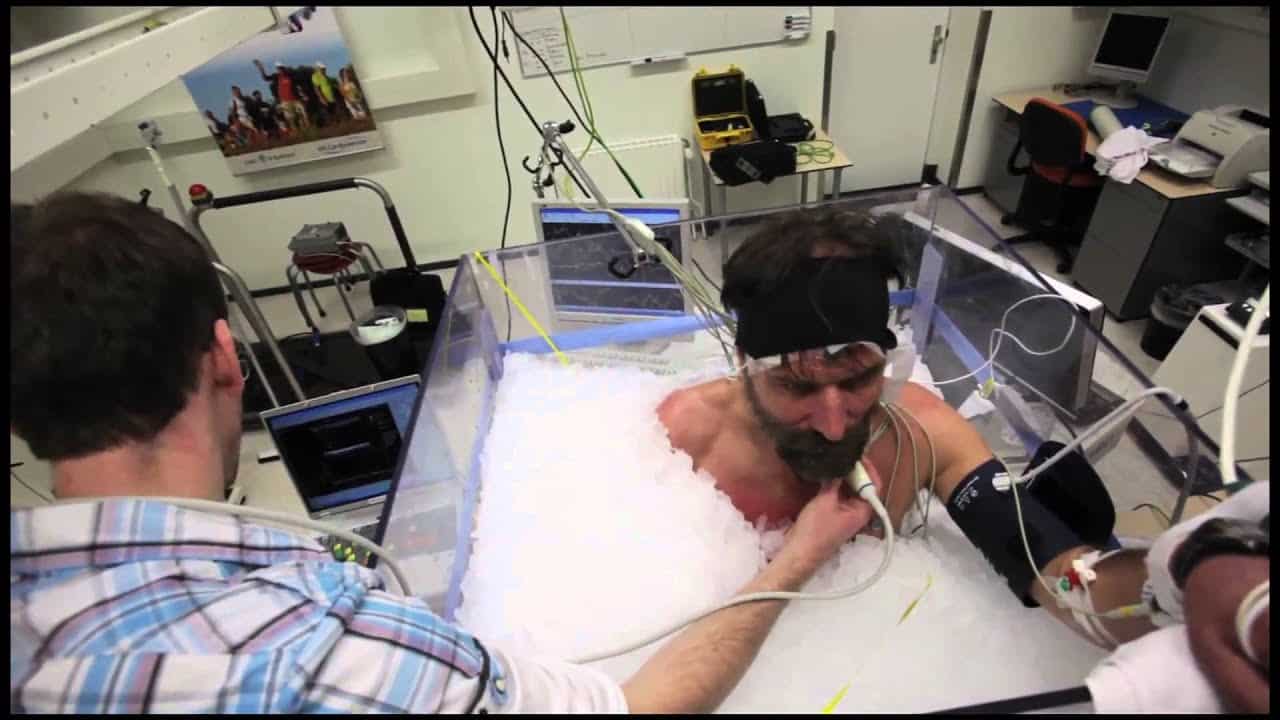
How Does it Work? The Science of the Wim Hof Breathing Method
The Wim Hof Power Breathing involves 30-40 deep breaths (more detailed explanation soon). Many people think that breathing in this way charges up the body with more oxygen. This is not true.
For a normal healthy individual, their blood oxygen level will be between 95-99 percent.
Deep breathing, harder and faster does not increase the oxygen saturation in the blood, it actually decreases it.
According to the author of Oxygen Advantage, Patrick McKeown, when you breathe hard (hyperventilation) four things happen:
- Increases the partial pressure of O2 in the blood
- Increases the amount of O2 dissolved in the blood (2 percent of oxygen is carried dissolved in the blood)
- Does not increase saturation of blood with oxygen – 98 percent of O2 is already carried by Hb
- Lowers carbon dioxide in the blood
What does this mean?
The science described by the Bohr Effect indicates that taking 30 large mouth breaths will lower the concentration of carbon dioxide in the blood and limit the release of oxygen from the blood to the cells.
Patrick McKeown
For more information on the science of Wim Hof Power Breathing, you can watch this video clip of Patrick Mckeown explaining how it works.
How to Practice The Wim Hof Method Breathing Technique
The Wim Hof Method is similar to Tummo (inner heat) Meditation and Pranayama (yogic breathing). Yet it is something else entirely. While Wim has studied yoga and meditation for many years, this technique primordially comes from what he terms “cold hard nature.” By subjecting himself to the bitter conditions of nature, he learned to withstand the extreme forces of cold, heat, and fear.
He did this by observing how he breathed under extreme cold, then took that style of breathing and developed it into a method which he did outside of the cold. He noticed that when he would do this breathing technique, he could last much longer submerged in icy water.
If you learn this method or technique correctly, it will empower you.
The first part is a breathing exercise which can be likened to controlled hyperventilation. This is, of course, an oxymoron. Hyperventilation is something that happens involuntarily. But just imagine the breathing part, without any of the stress triggers that normally cause this way of breathing. The image will consist of rapid breathing that makes one languid, invigorates one, makes one high on oxygen. One mechanism of this practice is the complete oxygenation of your blood and cells.
Before you try this at home make sure that you don’t do this:
- Underwater
- While driving
- While standing up
- Without approval of your medical caregiver
I will share Wim’s guided meditation shortly, but first it is imporatnt you cognitively understand what is involved in Wim’s breathing method.
1) Get comfortable and close your eyes
Sit in a meditation posture or lie down—whatever is most comfortable for you. Make sure you can expand your lungs freely without feeling any constriction. It is recommended to do this practice right after waking up since your stomach is still empty.
2) Warm Up
Inhale deeply. Really draw the breath in until you feel a slight pressure from inside your chest on your solar plexus. Hold this for a moment and then exhale completely. Push the air out as much as you can. Hold this for a moment. Repeat this warm-up round 15 times.
3) 30-40 Power Breaths
Imagine you’re blowing up a balloon. Inhale through the nose and exhale through the mouth in short but powerful bursts. The belly is pulled inward when you are breathing out and is pulled outward when you are breathing in. Keep a steady pace and use your midriff fully. Close your eyes and do this around 30 times or until you feel your body is saturated with oxygen. Symptoms could be light-headedness, tingling sensations in the body, electrical surges of energy. It’s important that you practice conscious breathing thorughout this expereince, keeping your mind focused and sharp.
4) Scan your body
During the 30 power breaths, delve into your body and become aware of it as possible. Trace your awareness up and down your body and use your intuition as to what parts lack energy and what parts are overflowing. Scan for any blockage between the two. Try to send energy/warmth to those blockages. Then release them deeper and deeper. Tremors, traumas, and emotional releases can come up. It can be likened to kundalini rising. Feel the whole body fill up with warmth and love. Feel the negativity burn away.
Often people report swirling colors and other visual imagery during this exercise. Once you encounter them, go into them, embrace them, merge with them. Get to know this inner world and how it correlates to the feeling of tension or blockages in your body.
5) The Hold
After the 30 rapid successions of breath cycles, draw the breath in once more and fill the lungs to maximum capacity without using too much force. Then push all of the air out and hold for as long as you can. Draw the chin in a bit so as to prevent air from coming in again. Really relax and open all energy channels in your body. Notice how all the oxygen is spreading around in your body. Hold your breath until you experience the gasp reflex on the top of your chest.
6) Recovery Breath
Inhale to full capacity. Feel your chest expanding. Release any tension in the solar plexus. When you are at full capacity, hold your breath once more. Drop the chin to the chest and hold this for around 15 seconds. Notice that you can direct the energy with your awareness. Use this time to scan the body and see where there is no color, tension, or blockages. Feel the edges of this tension, go into it, move the energy towards this black hole. Feel the constrictions burning away, the dark places fill with light. Relax the body deeper as you move further inward, let everything go. Your body knows better than you do. After 15 seconds you have completed the first round.
—
Start this practice with one or two rounds. Try to do it daily and add two more rounds in a few days. After you feel more comfortable with holding your breath you can start to add exercises and stretches. Work up to a minimum of 15 minutes or 6 rounds with exercises. You can do this practice for how long it pleases you.
If you feel dizziness or pain, get out of the posture and lie on your back. Breathe easily again and stop this practice session.
Reserve at least 5 minutes after this practice to relax and scan the body.
Summary
- 30 times balloon blowing
- Breathe in fully
- Breath out fully and hold until gasp reflex
- Inhale fully and hold for 10-15 seconds.
- Repeat until finished
- Take 5 minutes to relax and scan your body
Guided Wim Hof Breathing Technique
Bonus Power-ups—Wim Recommends These During Round 4
- Add push-ups or yoga poses during the time you are holding your breath until you wait for the gasp reflex. Notice that you are stronger without air than you would normally be if you could breathe!
- Charge the energy up the spine by holding moola banda, contract the rectum & sex organ and pull the navel inward towards the spine.
- Stand up in squat position and do the balloon breath. Try to breathe away the burn. (get seated again the moment you continue the cycle, you don’t want to be standing and faint) See if you can get the energy overtake the pain. Don’t give up easily and see how far you can go if you have the willpower!
Cold Exposure Training
After the body scan of the previous exercise, you are ready to let your body embrace the cold. It is very important to try to relax as much as you can, really be with the cold, only then can your body process the signals and start thermogenesis. As Wim says, “the cold is your warm friend!“
Cold Showers
If you are new to cold exposure, start with cold showers. Begin with your feet and then follow with your legs, your stomach, shoulders, neck and back, and finally your head. An initial shock, shivering and hyperventilation is normal. Try to remain calm and breathe easily. Close your eyes and really try to embrace the cold.
If you feel any strong physical uncomfortableness, like heavy shivering, numbness, or pain, get your body warm again as soon as possible.
Once you are out of the shower, take a moment to do another slow body scan before you dry yourself.
Cold exposure works like weight lifting, you get stronger over time. There are little muscles around your veins that contract when they get into contact with the cold. After some time (only 1-2 weeks according to Wim) these become stronger, making your veins healthier and reducing the force that your heart has to use to pump blood around your body.
You can increase exposure over time. At one point the cold will feel just as comfortable as wearing your favorite pajamas and you can skip the warm shower completely. Notice how you feel amazing after a cold shower and sluggish after a warm one.
Ice Baths
After a few weeks of cold showers, you can up the ante to an ice bath. Get 2-3 bags of ice at your local convenience store and put them in a half-full bathtub. Wait until around two-thirds is melted or that the water has reached your designated temperature (10 / 12 °C (50 / 59 °F)). You can throw in a couple of handfuls of salt to speed up this process.
As with the cold showers, try to relax as much as you can. Start out with around 10 minutes and increase exposure over time. If you feel uncomfortable or in doubt, get out. After this exercise makes sure you do another body scan.
It is normal to feel extra cold after a small period of time after the ice bath. This is called the after-drop. Take a hot glass of raw coca and keep your blood flowing by taking a walk. You’ll feel amazing after!
Please be mindful that you are doing these exercises at your own risk. Using any of these exercises while driving or being immersed underwater can be extremely dangerous. When in doubt, talk with your medical caregiver.
These exercises are extremely powerful when done consistently and with intent. Always make sure you are safe and can’t harm yourself or anyone else in the process. Try them and out and report your findings in the comments below! Remember, the cold is your warm friend.
Rare, Classic HighExistence Interview with Wim
Here is an interview I did with Wim while he was staying at The Valhalla Movement HQ. He speaks about the origins of the Wim Hof Method, and his vision of a world free of sickness.
Note: The Wim Hof Method App is a fantastic free tool you can use to practice the breathing method, cold showers (with a nice timer), and yoga poses. It’s a great tool to bring together everything discussed in this post.



